Spinal mobility is "central to a healthy body." Here's how this yoga teacher recommends you improve it in just three moves
Do you have a stiff back? It might be spinal immobility
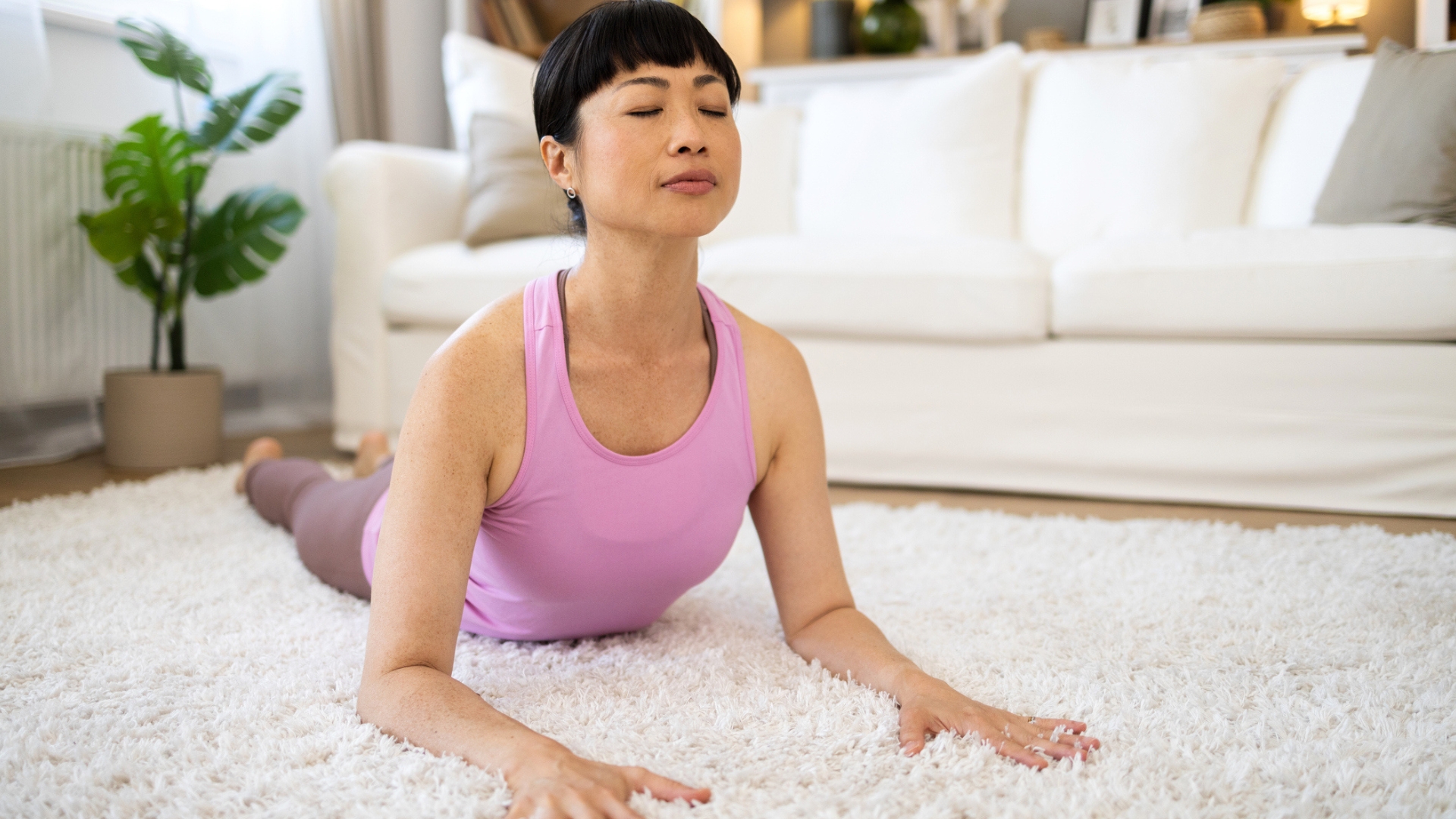
How often do you think about your spine? Unless you’re a chiropractor, probably not much—until it starts to bother you.
As we age, everyday factors like lack of movement and muscle soreness can leave the spine stiff and restricted.
“Modern life, especially the many hours we spend sitting, can cause stiffness and reduce the range of motion in the back,” says yoga instructor Louise Bartlett.
“When the spine becomes stiff, it can impact everything from your ability to turn your head while driving, to finding comfort while sitting and experiencing restful sleep.
“Healthy spinal mobility supports functional movement, reduces the risk of injury and can even influence mood and energy levels by promoting better and fuller breathing and nervous system regulation. It is central to a healthy body,” she adds.
Bartlett says that yoga can unlock tension and relieve tightness, soreness or stiffness in your back.
It can also help you move your spine in all of its natural directions: flexion (bending forward), extension (arching backward), rotation (turning), and side bending.
Start your week with achievable workout ideas, health tips and wellbeing advice in your inbox.
She recommends trying the below three poses to improve your spinal mobility.
Three poses for spinal mobility
Bartlett recommends spending one to two minutes in each pose or building up to that. Take five to eight slow, intentional breaths in each and focus on moving and holding the pose with awareness.
“This short, beginner-friendly sequence is designed to help counteract the effects [of modern life] and increase mobility as we age.
“Focus on moving with your breath, allowing each inhale to create length and each exhale to invite softness and release,” she advises. “The full sequence can be done in under 10 minutes.”
If you're new to yoga or returning after a break, move gently and consult a healthcare professional.
“If you have any spinal injuries, chronic conditions or other health concerns, please consult a healthcare professional before beginning,” she says.
1. Seated twist
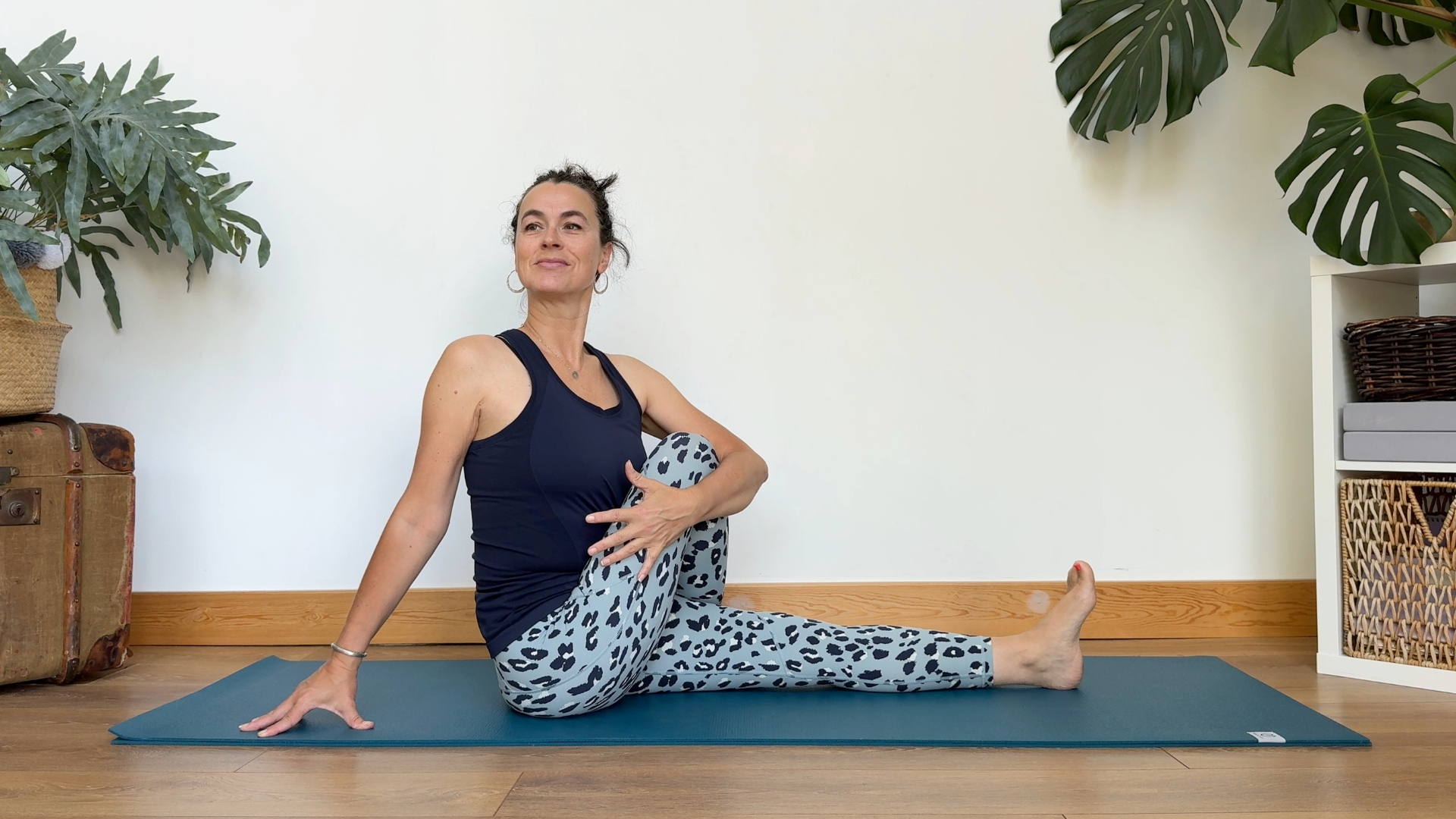
Why it works: “This pose improves rotation through the spine, increases flexibility in the back and helps release tension in the shoulders and neck,” Bartlett says.
Hold: 5-8 breaths
- Sit on the floor, legs extended in front of you.
- Bend your right knee, placing the foot flat on the floor outside your left thigh.
- Keep your left leg extended or maintain a slight bend.
- Place your right hand behind you for support and your left hand on the outside of your right knee.
- Inhale, lengthen your spine and sit up taller.
- Exhale, gently twist to the right from your lower back, keeping your shoulders relaxed and down.
- Slowly return to your starting position and repeat on the other side.
Make it easier: You can sit on a folded blanket or cushion to help lengthen the spine or to support tight hips. If crossing your leg over the other is difficult, keep it on the same side.
2. Cat–cow
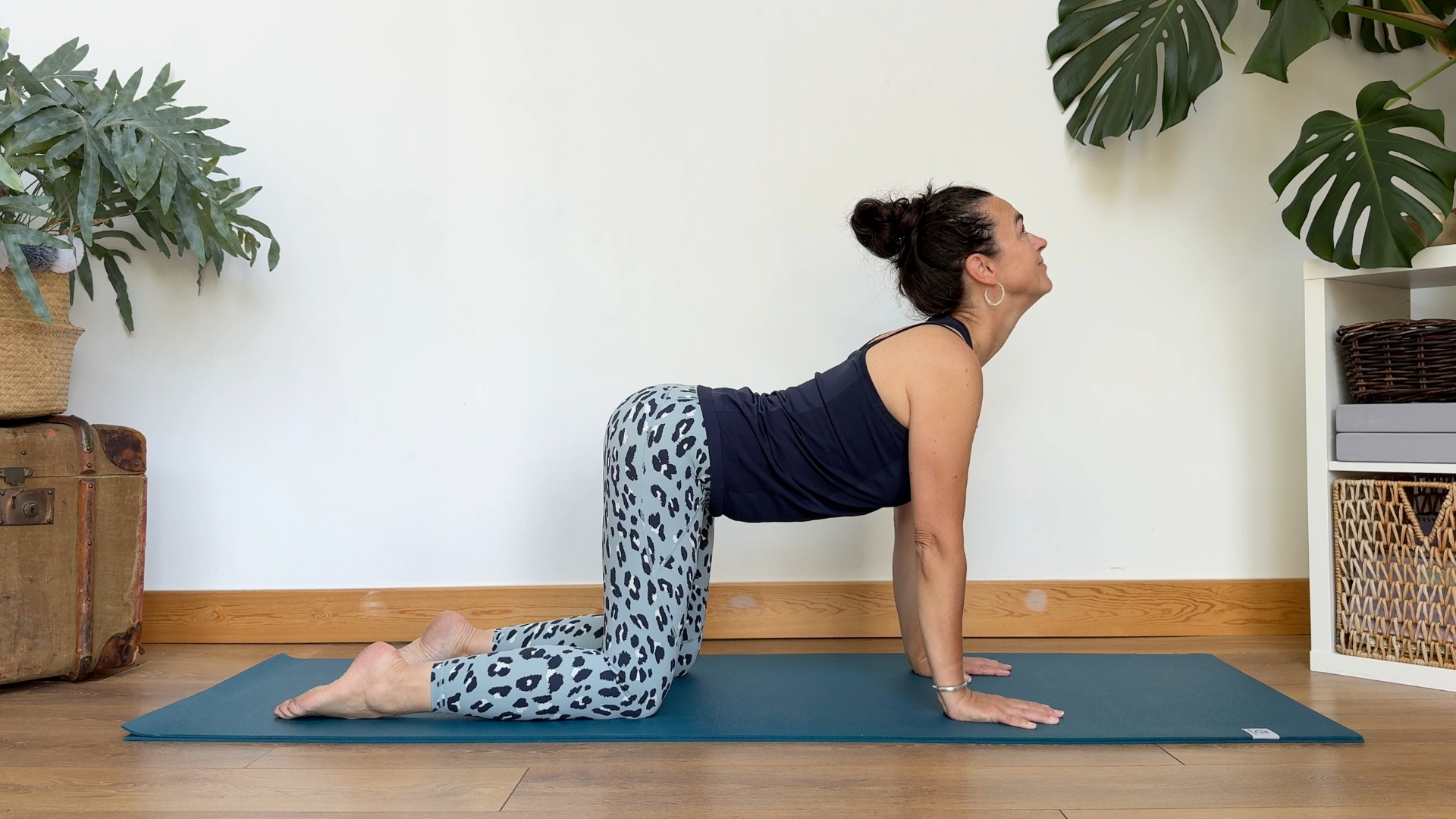
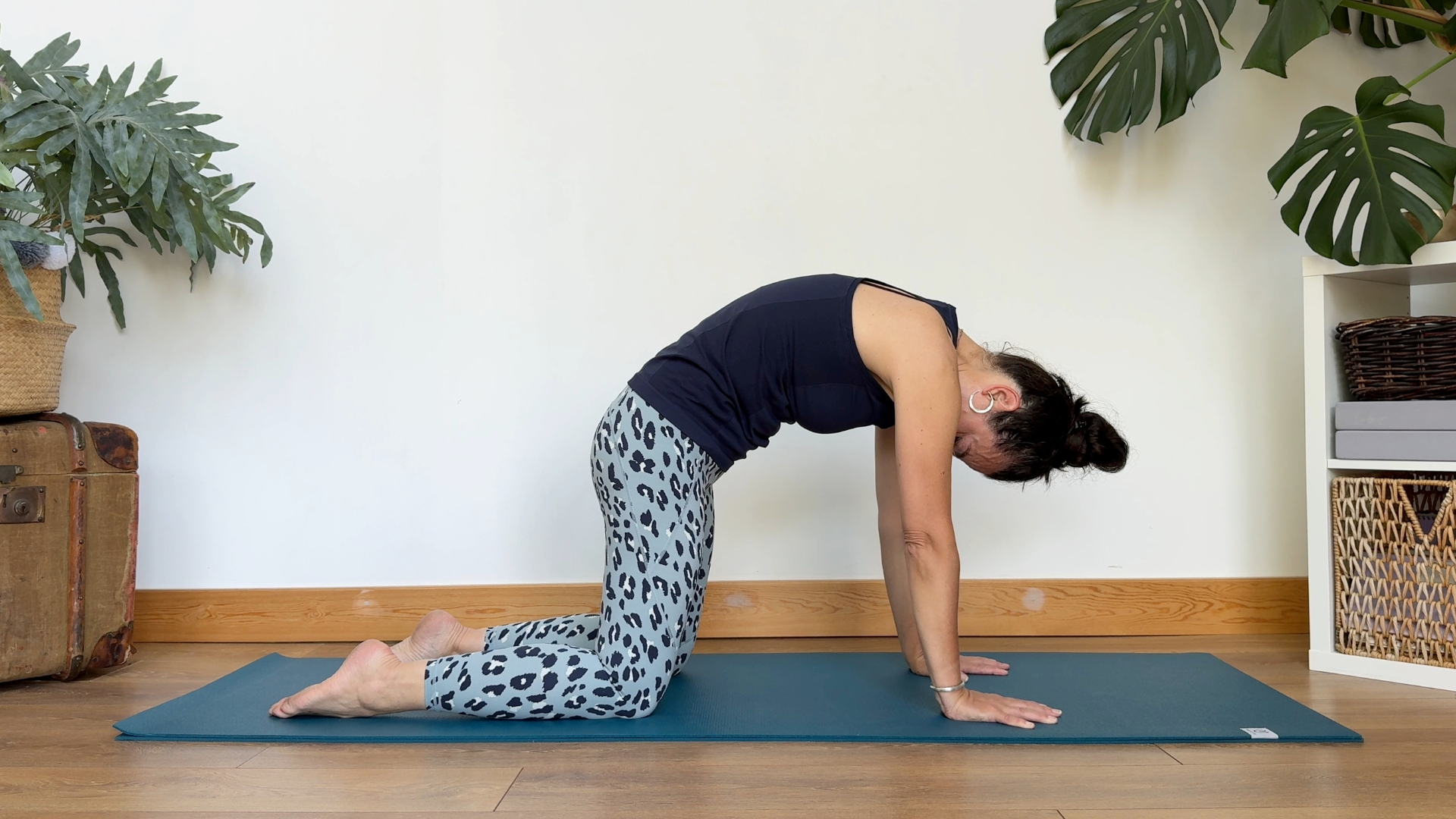
Why it works: "This pose warms up the spine through gentle flexion [bending] and extension [arching], increases mobility in the back and improves posture awareness,” Bartlett says.
Hold: 5-8 breaths
- Start on your hands and knees, with your wrists under your shoulders and your knees under your hips. Press your palms, shins and the tops of your feet firmly into the floor.
- Inhale, drop your lower spine and belly toward the floor, lifting your tailbone and chest and looking upwards.
- Exhale, round your spine upward, tucking your chin to your chest and drawing your belly button toward your spine.
- Flow between the two poses five to eight times, synchronizing with your breath, then return to your starting position.
Make it easier: Place a folded blanket under your knees for comfort. If your wrists are sensitive, make fists with your hands or rest your forearms on blocks.
3. Sphinx
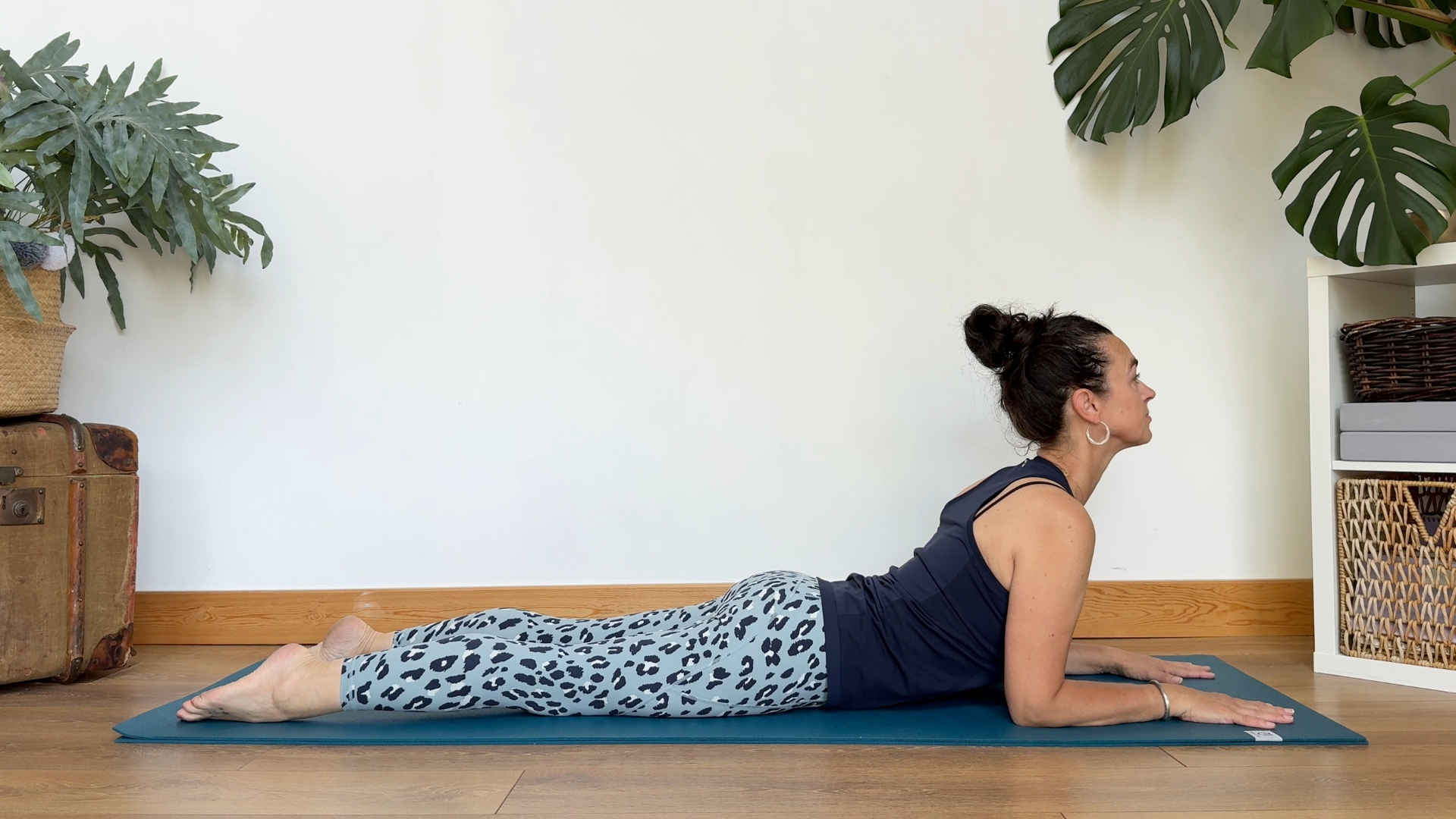
Why it works: “This pose gently strengthens the back muscles while increasing extension in the spine, particularly in the lower and mid back,” says Bartlett.
Hold: 5-8 breaths
- Lie on your front, legs extended behind you and the tops of your feet pressing into the floor.
- With your elbows under your shoulders and forearms parallel to each other, press your palms and forearms into the floor.
- Lift your chest, keeping your shoulders relaxed and down.
- Lengthen your tailbone toward your heels to protect your lower back and look forward or slightly down to avoid neck strain.
- Hold for five to eight breaths, then slowly lower your chest and head to the floor.
- Turn your head to one side and rest your arms alongside your body for a few breaths.
Make it easier: Place a folded blanket under your ribs for additional support. If your lower back is tight, move your feet slightly wider apart.

Lou Mudge is a Health Writer at Future Plc, working across Fit&Well and Coach. She previously worked for Live Science, and regularly writes for Space.com and Pet's Radar. Based in Bath, UK, she has a passion for food, nutrition and health and is eager to demystify diet culture in order to make health and fitness accessible to everybody.
Multiple diagnoses in her early twenties sparked an interest in the gut-brain axis and the impact that diet and exercise can have on both physical and mental health. She was put on the FODMAP elimination diet during this time and learned to adapt recipes to fit these parameters, while retaining core flavors and textures, and now enjoys cooking for gut health.
You must confirm your public display name before commenting
Please logout and then login again, you will then be prompted to enter your display name.
